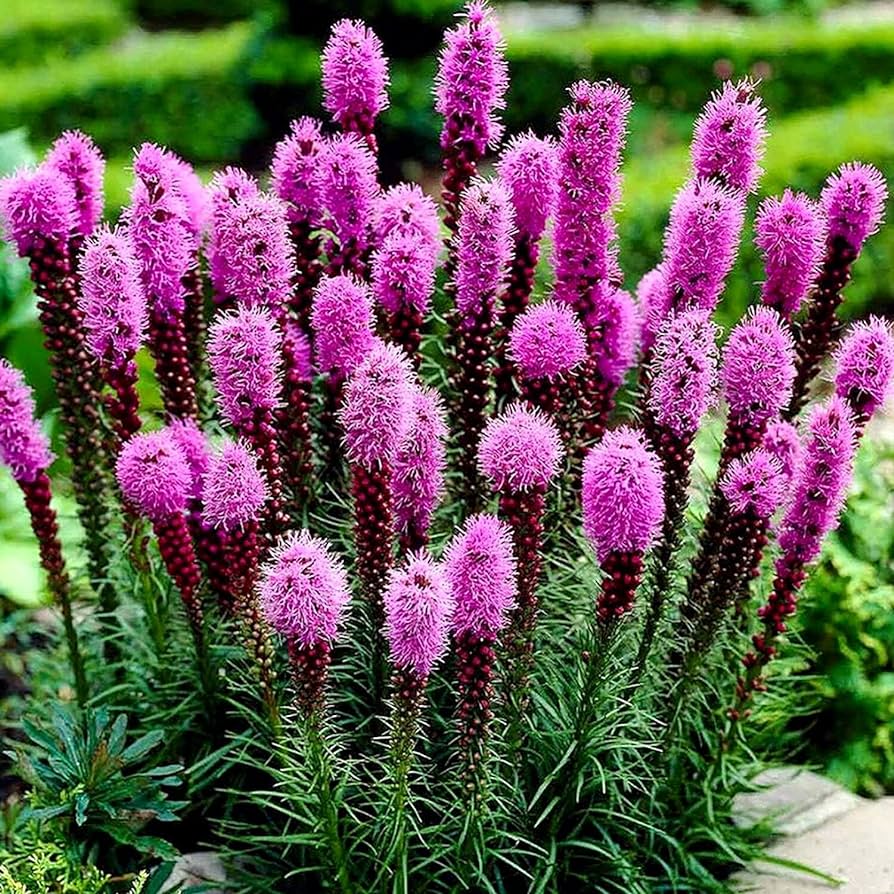Gayfeather Liatris for Sale
The Gayfeather liatris is a magnificent North American native whose fluffy, purple blooms have been dotting prairies for centuries. Its native range extends up into eastern Canada, and includes the midwestern and eastern United States. It thrives in prairies and meadows, but would be just as at home at the sunny edge of your native or wildflower garden.
Details: Gayfeather Liatris
Family: Asteraceae
Light Requirement: Full sun
Water Needs: Moderate, Regular
Height: 2-4 ft
Spread: 1 ft
Growth Rate: Moderate
Soil Preference: Moist, well-drained soil
Bloom Time: July, August, September
Flower Color: Purple
Wildlife Value: Host plant for moths, attracts pollinators, animals eat the seeds
Why Gayfeather Liatris is a Must-Have Pollinator Plant
This plant is distinct and immediately recognizable by its elongated inflorescence and thick, unbranched stem which often grows to 4 ft tall. Its leaves are long and thin, and clustered at the base before extending up the stem towards the showy flower cluster.
The purple blossoms bloom very close to the stem, and their fluffy petals spread outward covering the top few inches of the stem with a burst of purple. Their lush, finely textured foliage and unique height give wonderful contrast to the delicate, drooping plants in your garden. The Gayfeather Liatris has often been used medicinally by many indigenous peoples as a painkiller, and as an herbal insect repellent.
How to Grow and Maintain Gayfeather Liatris Plants
The Gayfeather Liatris is excellent for attracting pollinators and other insects to your garden. The showy, purple flowers attract a wide variety of butterflies and bee species, including Bumblebees, Leaf-cutter bees, and digger bees. The colorful flowers attract hummingbirds which feed on the nectar while groundhogs, voles and rabbits eat all parts of the plant.
This gorgeous flower is also a host plant for the rare and beautiful Glorious Flower Moth and the Liatris Borer Moth. The caterpillars of the latter will bore right through the plants’ thick stem, while the former’s larvae rest on the flower buds.
The Glorious Flower Moth blends beautifully in with the pinky-brown color of the stem and budding flowers with its shimmering, pink and tan wings, and can often be found resting on the plant as it turns slowly from purple to bronze in the autumn.



